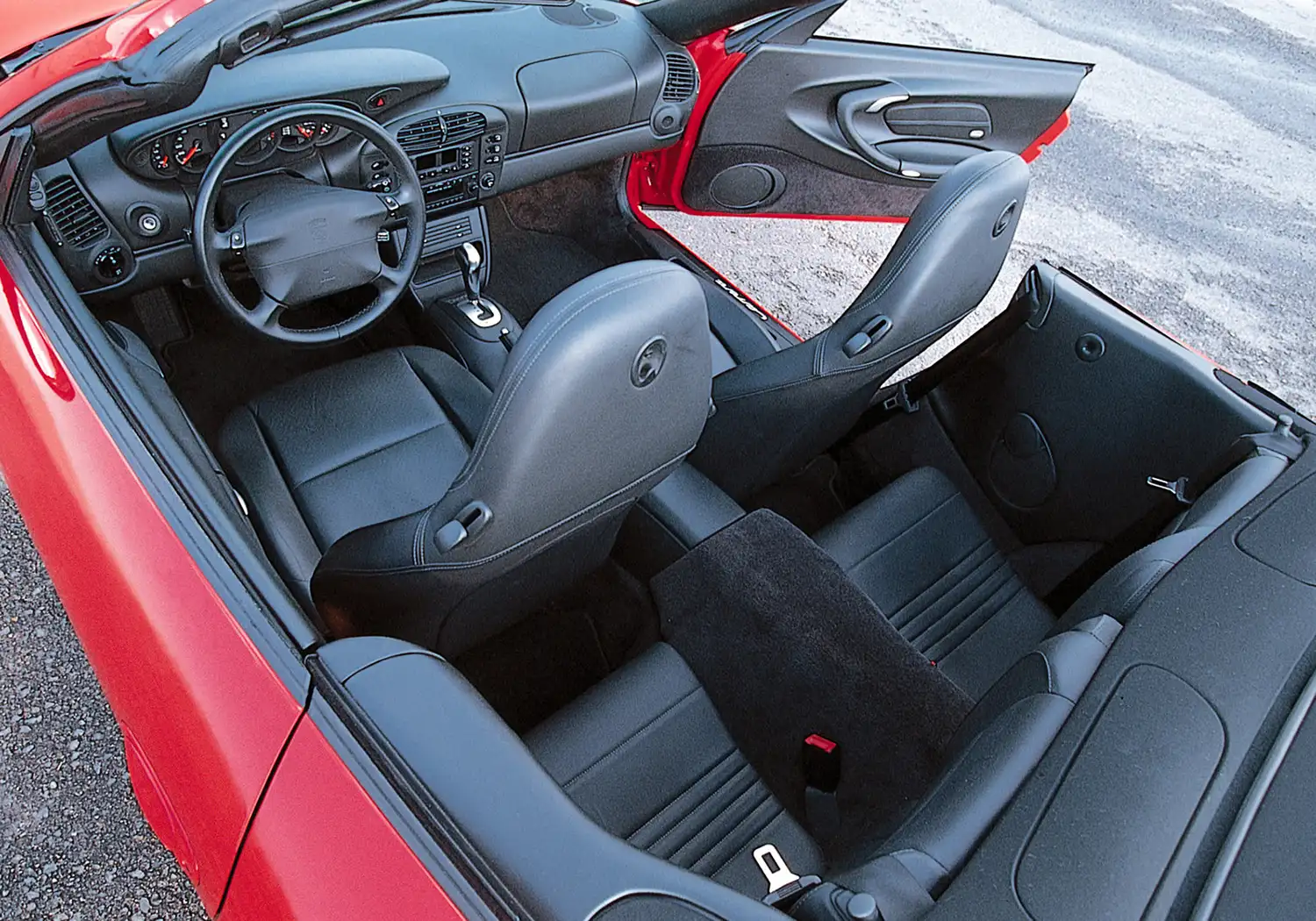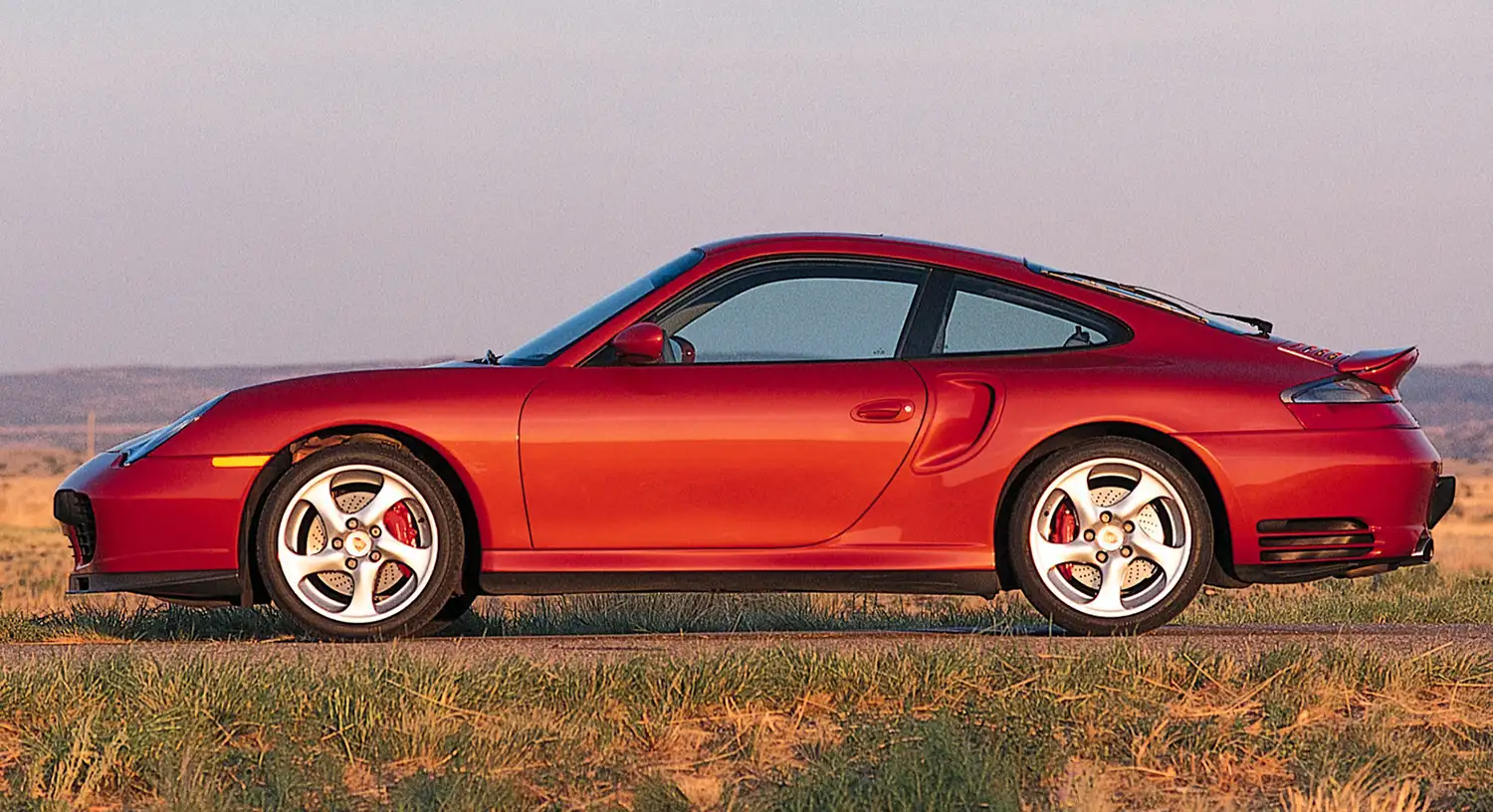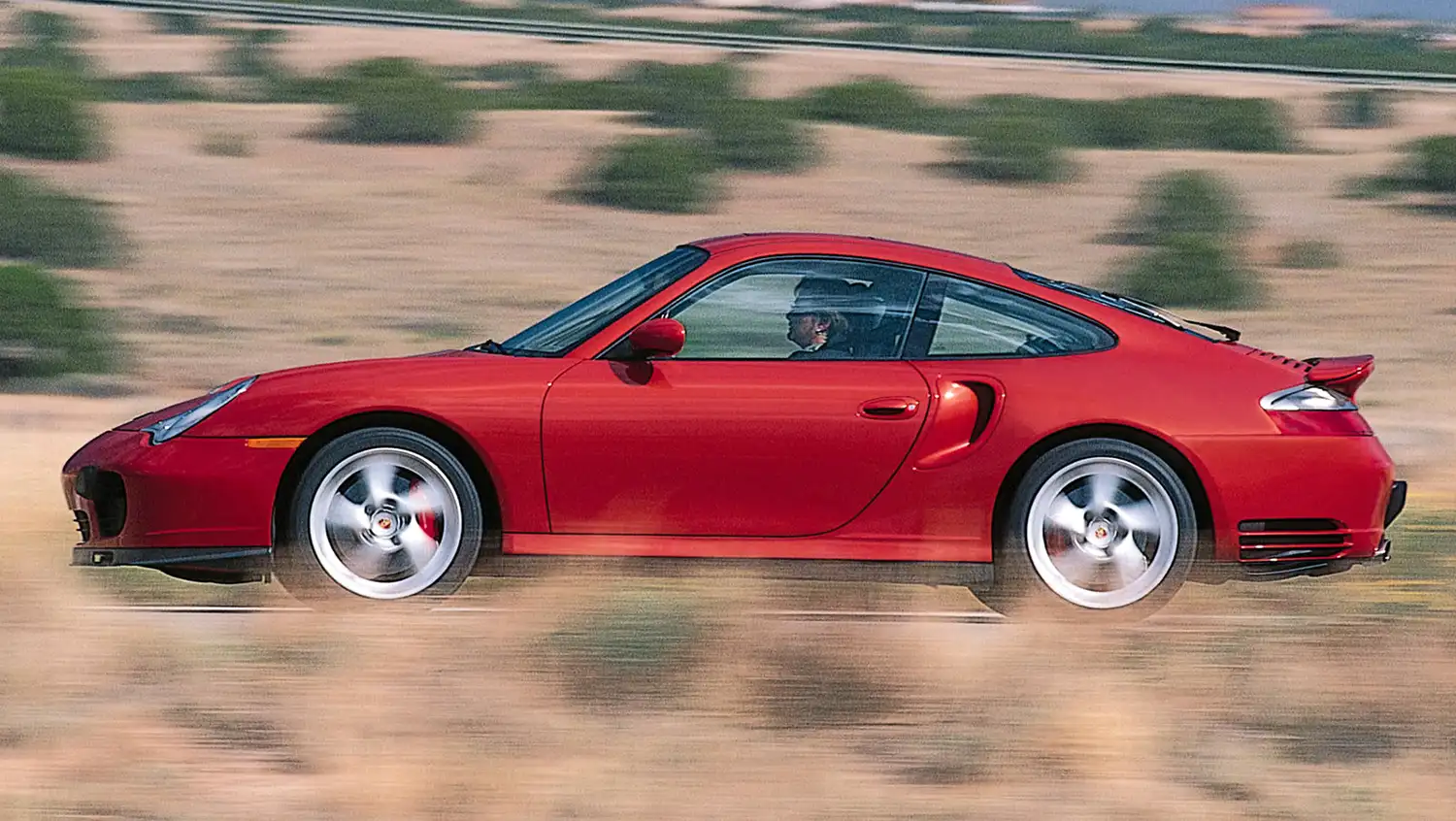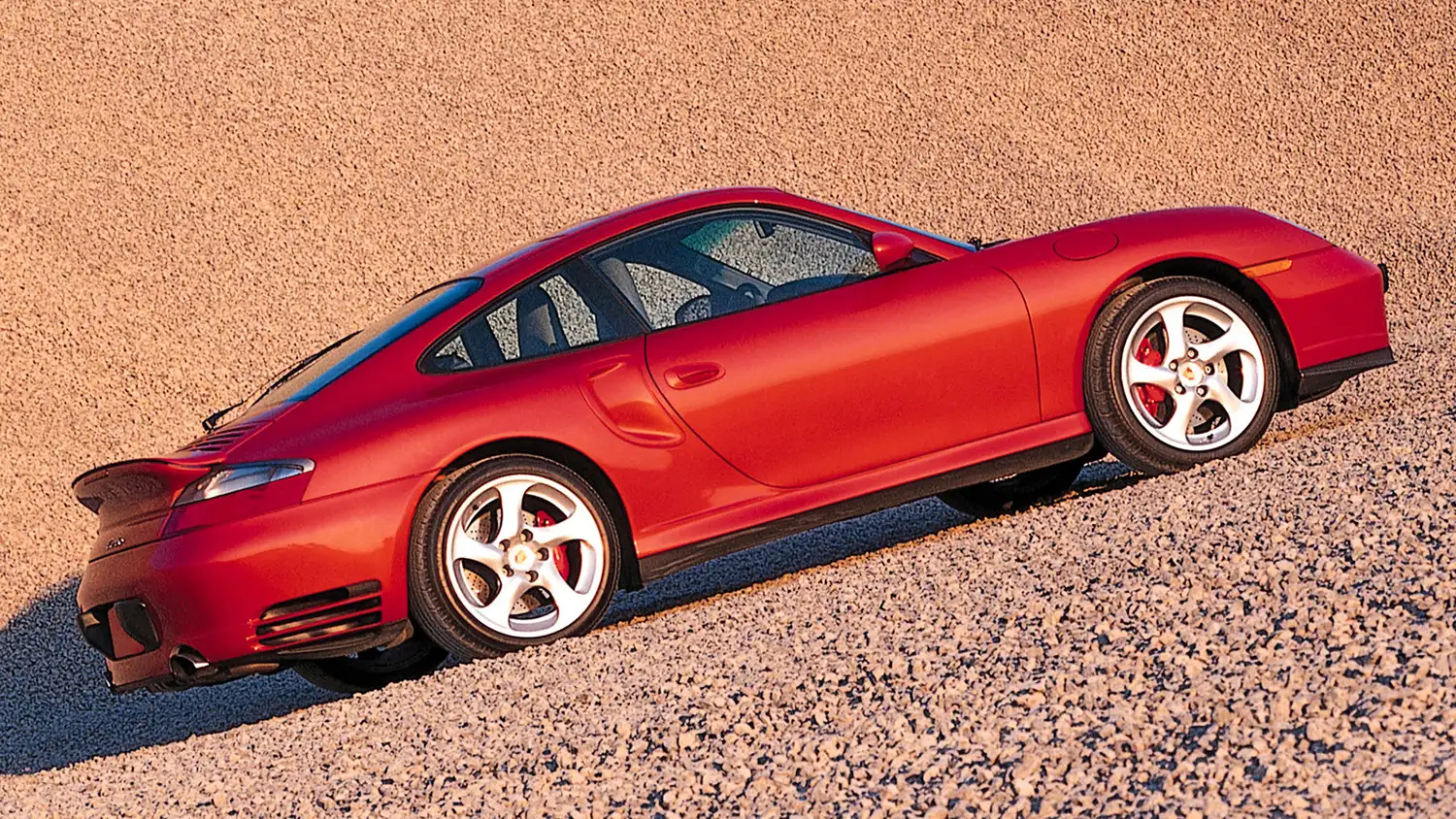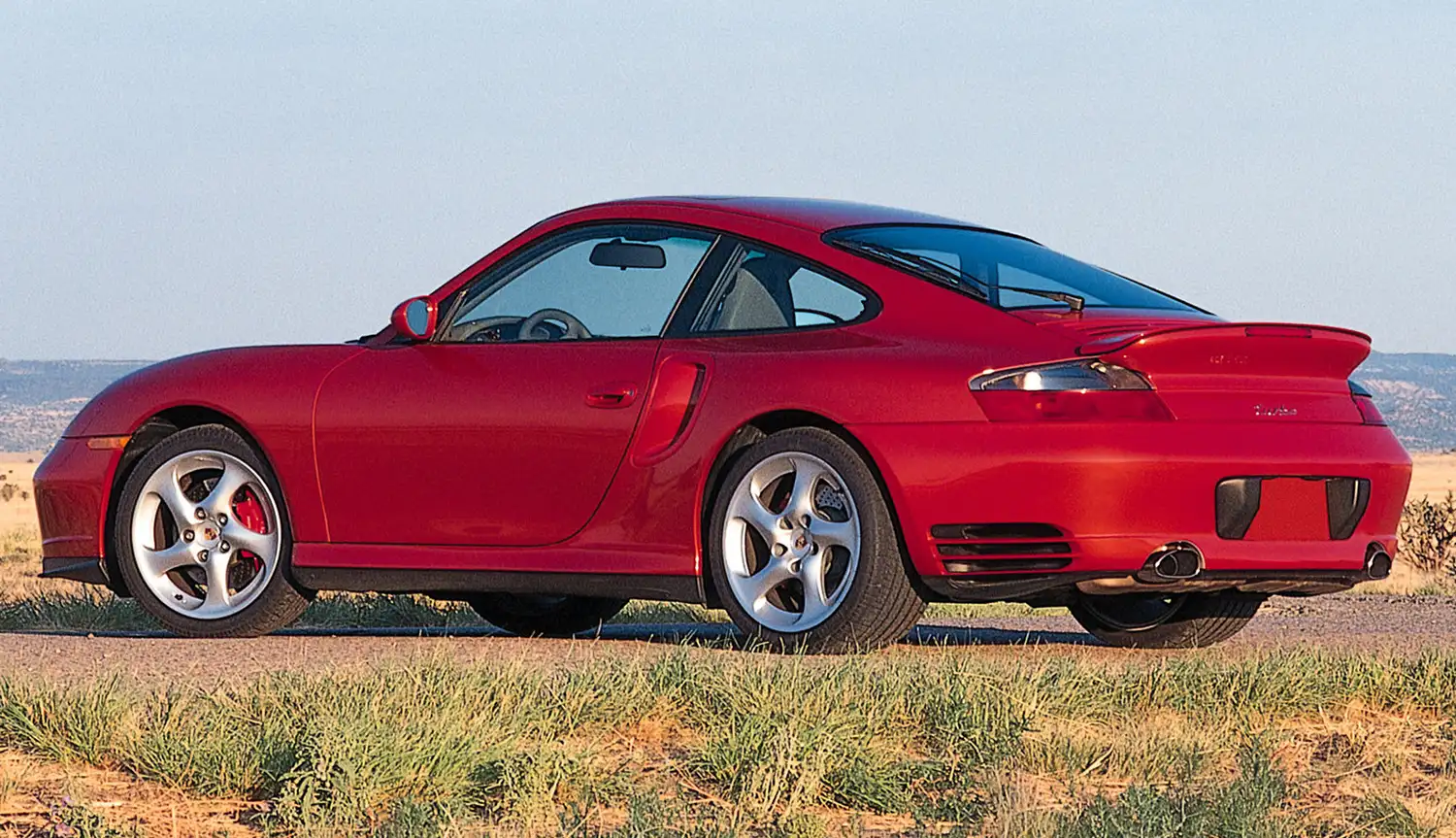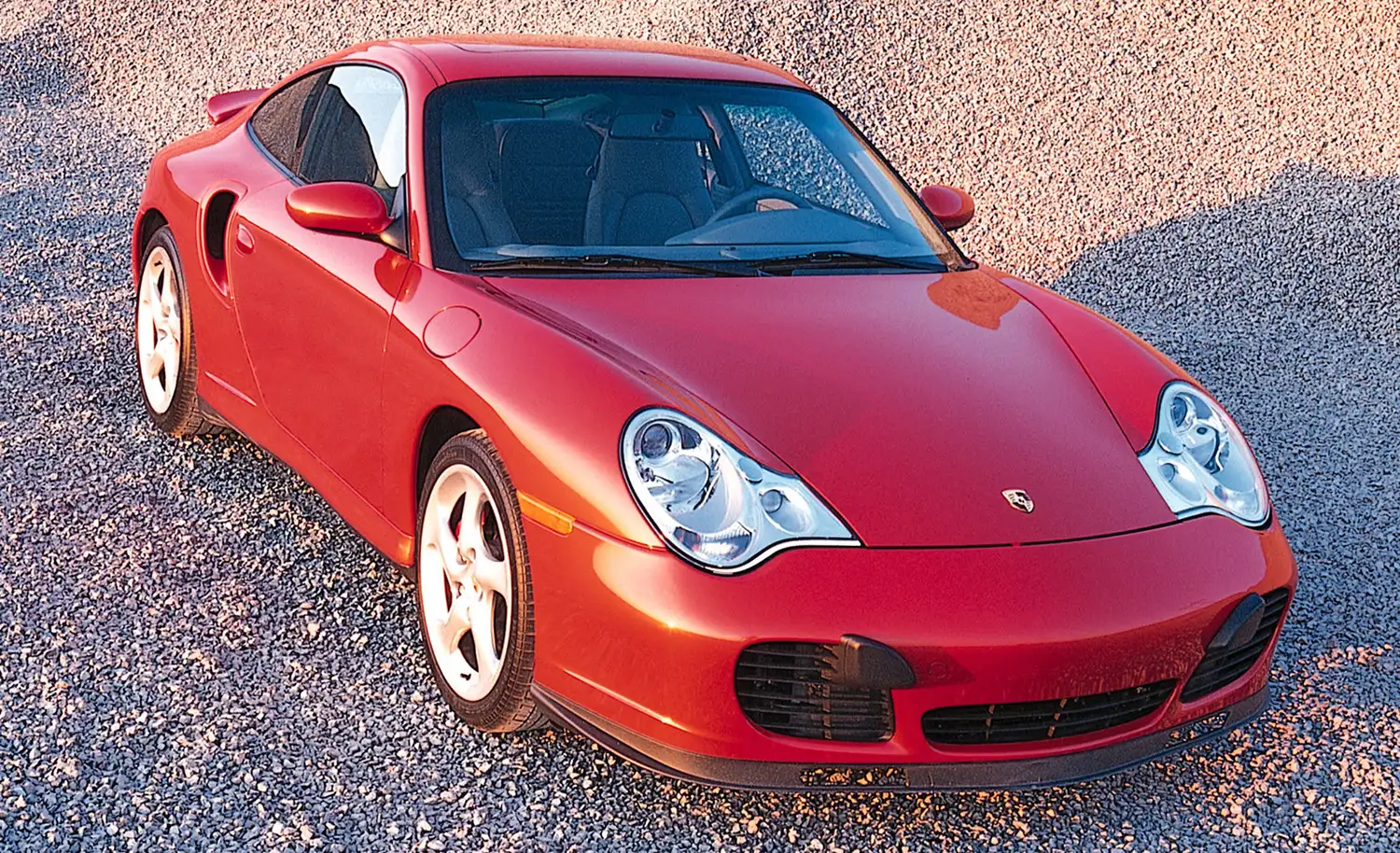
The Porsche 911 Turbo Type 996, spanning model years 2001 to 2005, stands as a pivotal model in Porsche’s lineup, heralding the return of turbocharged performance to the iconic 911 series. This iteration marked a significant evolution in sports car engineering, blending advanced technology with formidable power and distinctive design cues.
Engine Power and Transmission
Powering the Porsche 911 Turbo Type 996 was a potent 3.6-liter twin-turbocharged flat-six engine, delivering an impressive 420 horsepower. This engine was mated to a standard 6-speed manual transmission, providing enthusiasts with direct control over its robust performance. For those preferring automatic convenience, Porsche offered a 5-speed Tiptronic S transmission as an option, ensuring versatility to accommodate different driving preferences.
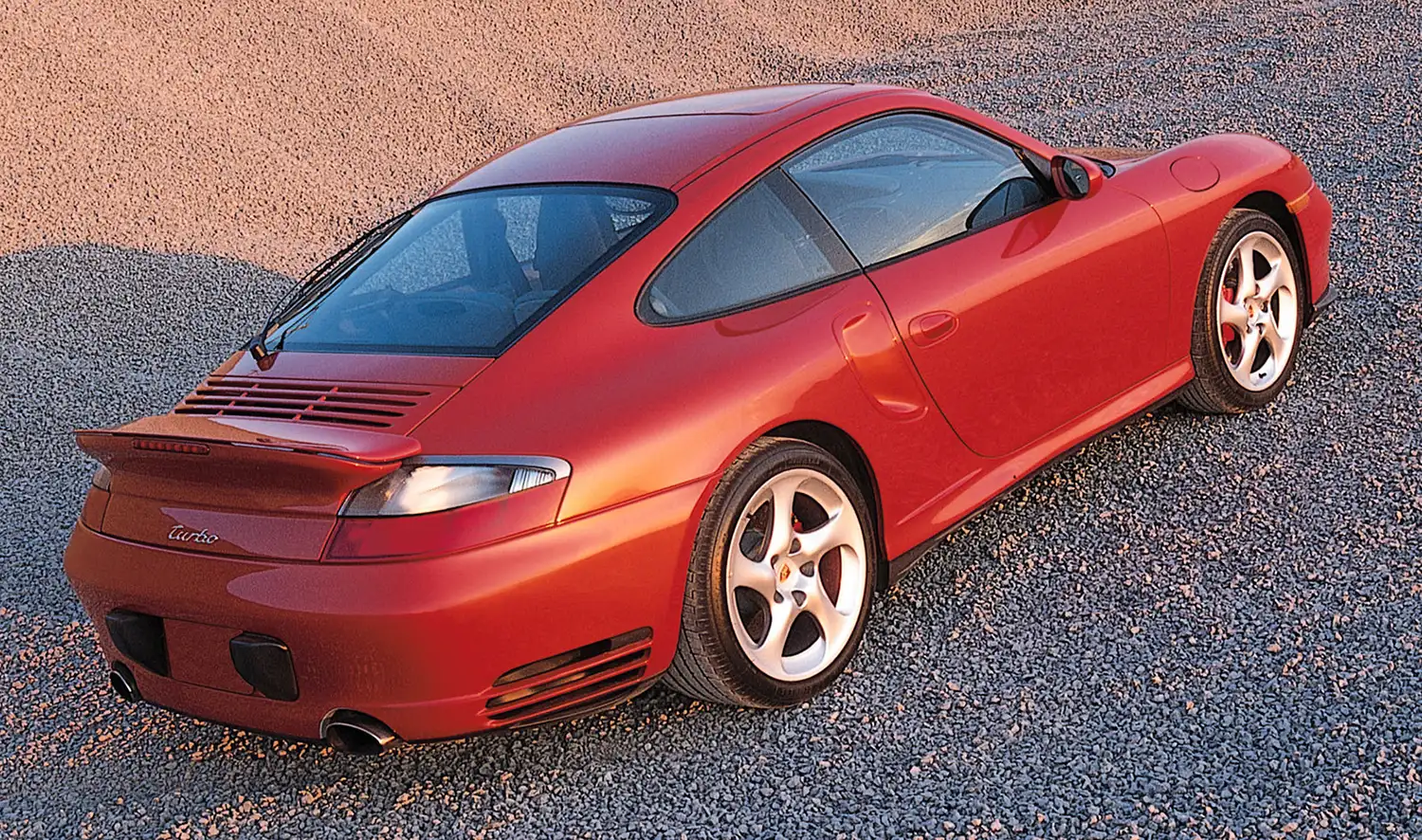
Performance Figures
The 911 Turbo Type 996 boasted exhilarating performance figures that underscored its supercar status. Equipped with the manual transmission, it accelerated from 0 to 60 mph in a blistering 4.2 seconds, showcasing its ability to launch with impressive speed. The top speed for the manual transmission variant peaked at 190 mph (305 km/h), emphasizing its capability to dominate straightaways with ease.
For drivers opting for the Tiptronic S automatic transmission, the 911 Turbo Type 996 maintained impressive acceleration, sprinting from 0 to 60 mph in 4.9 seconds and achieving a top speed of 185 mph (298 km/h). This dual-clutch transmission option provided smooth shifts and enhanced drivability without compromising on performance.
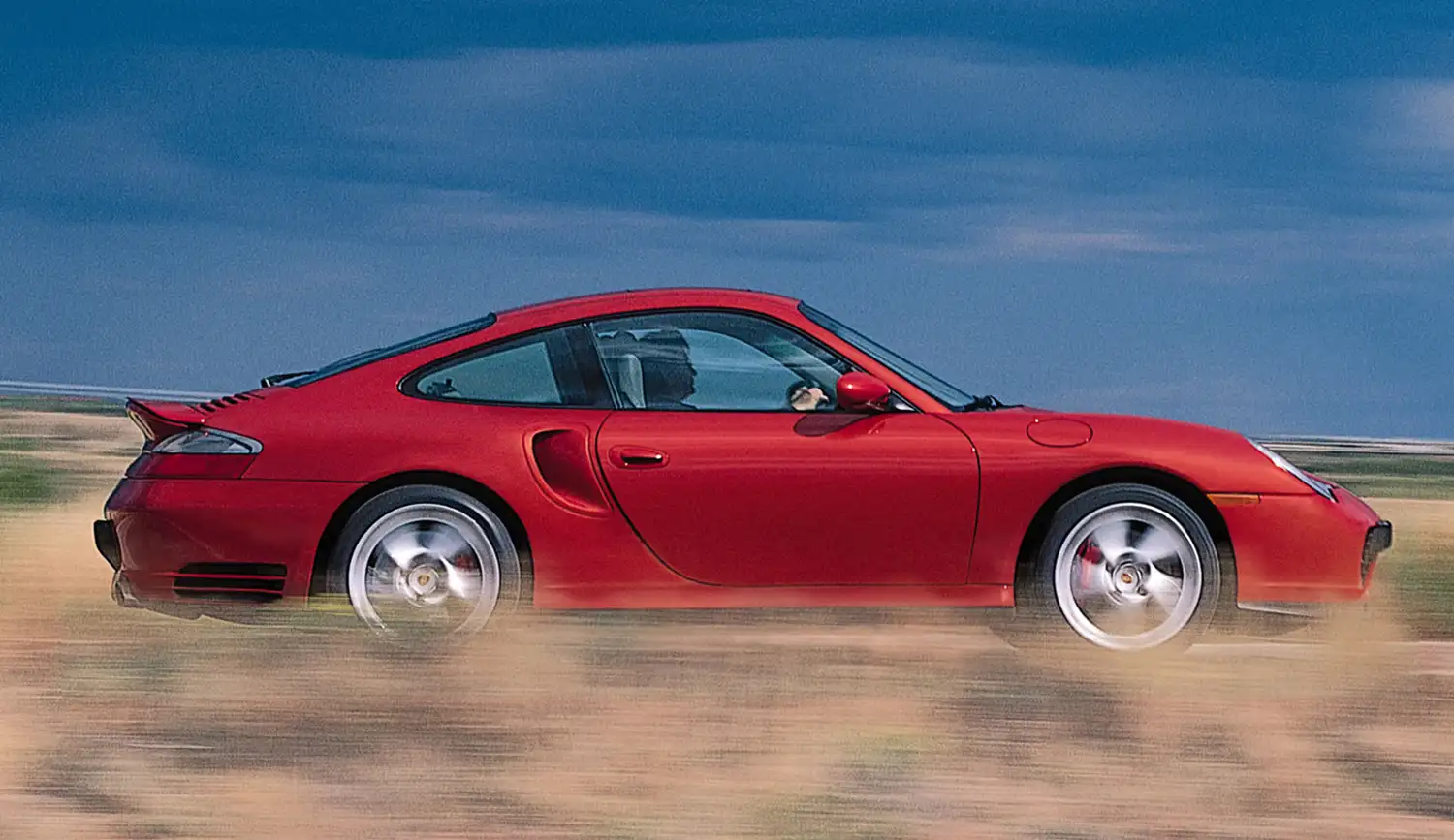
Design and Features
Externally, the Porsche 911 Turbo Type 996 featured iconic design elements that highlighted its sporting pedigree. Notable exterior features included three large air intakes with black grilles, distinctive bi-xenon headlights, and side skirts that seamlessly flowed into widened rear fenders. At the rear, three horizontal air vents and an integrated spoiler tear-off edge on the rear lid contributed to enhanced aerodynamics and a commanding presence on the road.
Drive and Handling
The 911 Turbo Type 996 was equipped with Porsche’s renowned all-wheel-drive system as standard, ensuring exceptional traction and stability across various driving conditions. This advanced system enhanced the car’s cornering capabilities and provided precise handling, allowing drivers to harness its full performance potential with confidence. The braking system featured four-piston aluminum monobloc fixed calipers, painted in striking Red, further emphasizing Porsche’s commitment to superior engineering and performance.
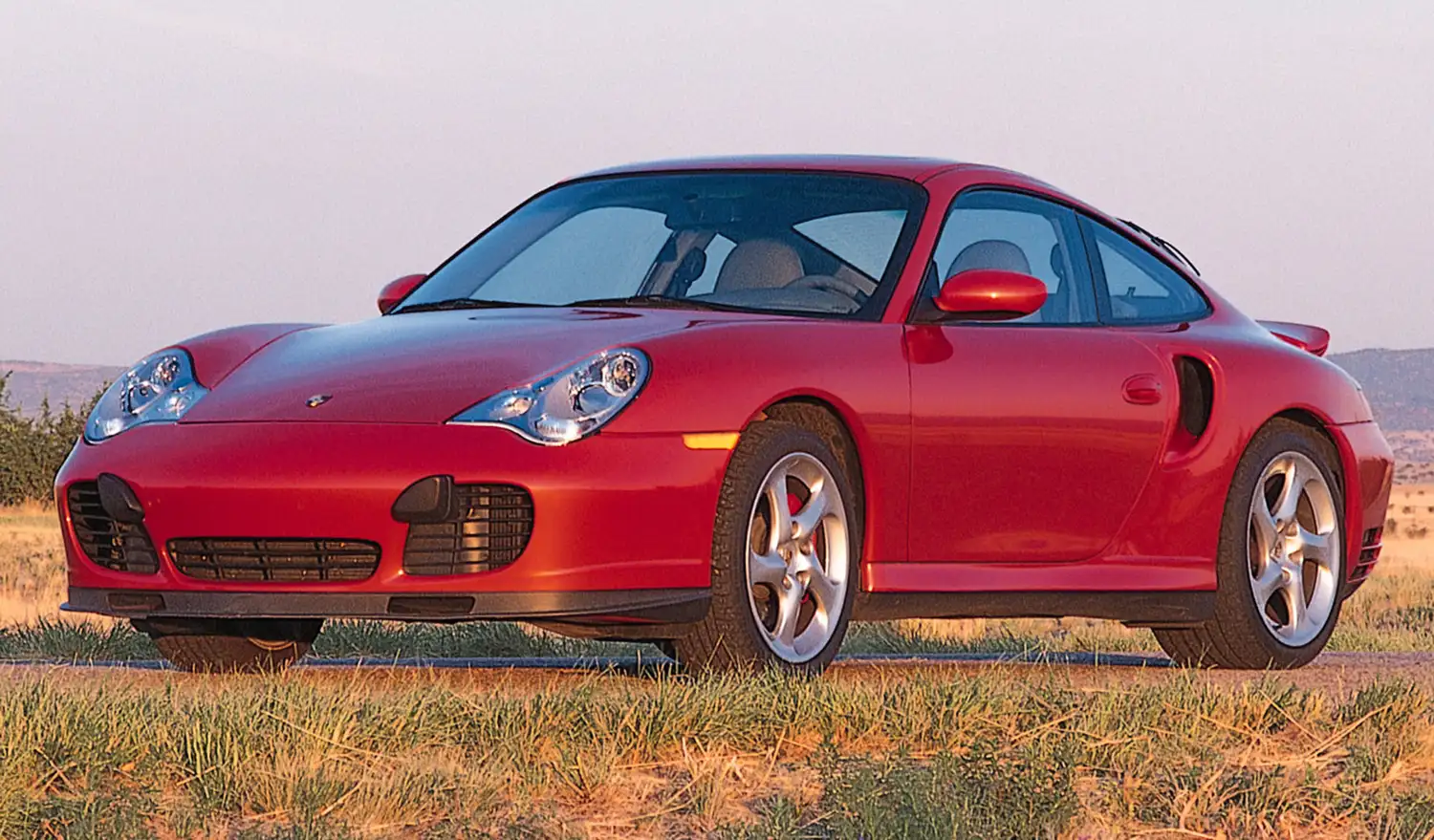
Legacy and Impact
The Porsche 911 Turbo Type 996 left an indelible mark in automotive history, setting new standards for high-performance sports cars. Its combination of raw power, advanced technology, and timeless design continues to resonate with enthusiasts and collectors alike, cementing its status as a coveted classic within the Porsche lineage.
As a testament to its enduring legacy, the 911 Turbo Type 996 remains a cherished icon among Porsche enthusiasts, symbolizing a golden era of turbocharged excellence and engineering innovation. Its distinct blend of performance and luxury continues to inspire admiration and define the essence of the Porsche driving experience.
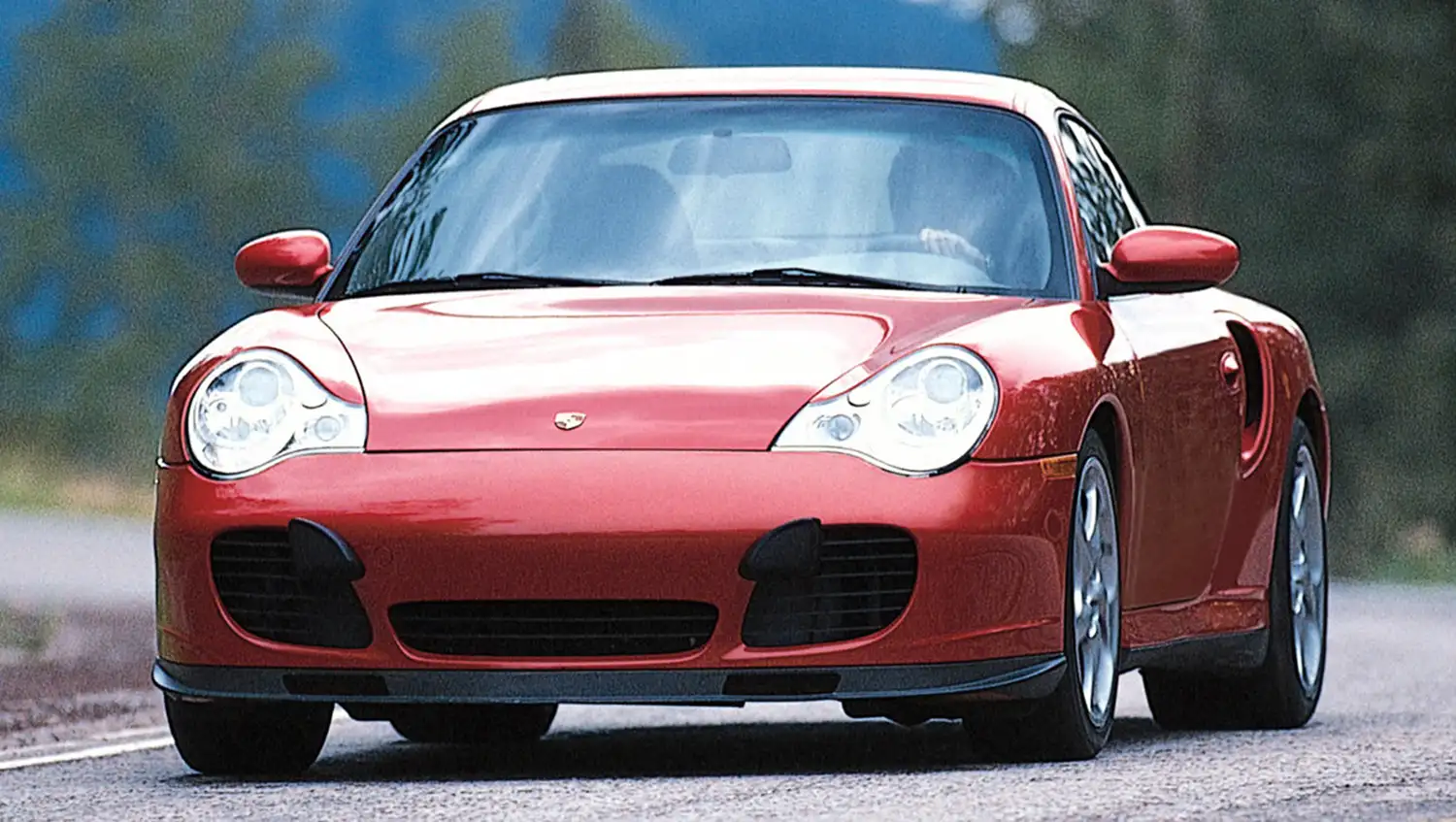
Porsche 911 Turbo Type 996 (2001-2005) – Engine and Performance
- Engine: 3.6-liter twin-turbocharged flat-six
- Power Output: 420 horsepower
- Transmission Options:
- Standard 6-speed manual
- Optional 5-speed Tiptronic S automatic
- Acceleration (Manual):
- 0 to 60 mph: 4.2 seconds
- Top Speed: 190 mph (305 km/h)
- Acceleration (Tiptronic S):
- 0 to 60 mph: 4.9 seconds
- Top Speed: 185 mph (298 km/h)
- Drive Type: All-wheel drive (AWD)
- Braking System: Four-piston aluminum monobloc fixed calipers (Red)
- Design Features:
- Three large air intakes with black grilles
- Bi-xenon headlights
- Wide body with integrated rear spoiler
- Side skirts and widened rear fenders
